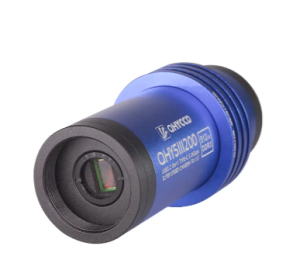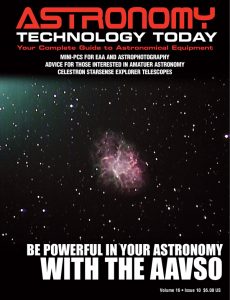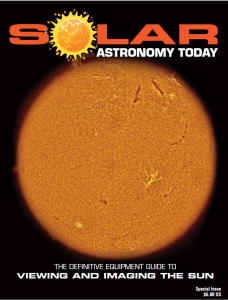The QHY5III200M camera is part of the newest generation of QHY5III V2 series planetary guide cameras, offering an enhanced version of its predecessor, the QHY 5III462C.
 As the QHY team notes, “In this latest generation of sensors, the photodiode portion of the pixel well is physically deeper than in previous sensors, allowing photons of longer wavelengths to penetrate deeper into the substrate. This dramatically increases the sensor’s sensitivity to red and near-infrared (NIR) light. The sensor displays almost equal peak sensitivity to NIR light as it does to light in the visible spectrum.”
As the QHY team notes, “In this latest generation of sensors, the photodiode portion of the pixel well is physically deeper than in previous sensors, allowing photons of longer wavelengths to penetrate deeper into the substrate. This dramatically increases the sensor’s sensitivity to red and near-infrared (NIR) light. The sensor displays almost equal peak sensitivity to NIR light as it does to light in the visible spectrum.”
One benefit of the back-illuminated CMOS structure is improved full well capacity. In a typical front-illuminated sensor, photons from the target entering the photosensitive layer of the sensor must first pass through the metal wiring that is embedded just above the photosensitive layer. The wiring structure reflects some of the photons and reduces the efficiency of the sensor.
In the back- illuminated sensor the light is allowed to enter the photosensitive surface from the reverse side. In this case the sensor’s embedded wiring structure is below the photosensitive layer. As a result, more incoming photons strike the photosensitive layer and more electrons are generated and captured in the pixel well. This ratio of photon to electron production is called quantum efficiency. The higher the quantum efficiency the more efficient the sensor is at converting photons to electrons and hence the more sensitive the sensor is to capturing an image of something dim.
The QHY5III200M camera is equipped with a 512MB DDR3 image buffer which can effectively reduce the pressure on computer transmission, a great help for planetary photography which often requires writing a large amount of data in a short period of time.
The camera utilizes the USB3.2 Gen1 Type-C interface. Compared to the USB3.0 Type-B interface used in the previous generation, the Type-C interface has a longer life and is more flexible. The custom interfaces of the previous generation camera has been replaced with a more universal ST-4 compatible guiding interface. Now, even if the guiding cable is lost or damaged, you will be able to easily get a replacement.
The QHY5III200M camera is equipped with a status indicator at the back of the camera. If the camera experiences an abnormal status, the multi-colored indicator light will help to determine the situation with different colors signifying different conditions. During normal operation this indicator light is off, so there is no worry about light contaminating the image.
The camera requires an input voltage between 11V and 13.8V. If the input voltage is too low the camera will stop functioning or it may reboot when the TEC power percent is high, causing a drain on the power. 12V works best however a 12V cable that is very long or a cable with small conductor wire may exhibit enough resistance to cause a voltage drop between the power supply and the camera.
The QHY5III200M camera uses a 1.25-inch eyepiece shape design, so it can be added to the 1.25-inch eyepiece without the need for additional interfaces. It also contains the front end of the C-mount, which can be connected to the C-mount lens. Note that this back intercept is slightly less than the standard C back intercept of 17.5 mm. The reason for this design is that a distance of 17.5mm can be achieved through a 1.25-inch spacer.
The QHY5III200M camera specifications include:
– CMOS Sensor : SC2210
– Pixel Size: 4um*4um
– Effective Pixel Area: 1920*1080
– Effective Pixels: 2 Mega Pixel
– Full Well: 8000e
– Readout Noise: 0.75e – 3e
– AD Sample Depth: 12bit (output as 16bit and 8bit)
– Built-in Image Buffer: 512MB DDR3 Memory
– ROI Frame Rate: Full Resolution – 96.5FPS @8BIT, 60FPS @16BIT; 960Lines – 187FPS @8BIT, 116FPS @16BIT; 480Lines – 209FPS @8BIT, 130FPS @16BIT
– Exposure Time Range: 15us-900sec
– Shutter Type: Electric Rolling Shutter
– Computer Interface: USB3.2 Gen1 Type-C
– Guide Port: ST4
– Telescope Interface:1 .25-inch,compatible with CS-port and C-port lenses by replacing the front-end connector (An IR AR glass and an IR850nm filter are included in the standard version.)
– Back Focal Length: 17mm (with adapter);; 8±0.5mm (without adapter)
– Weight: 90g
You can learn more about the QHY5III200M camera here.

 And to make it easier for you to get the most extensive news, articles and reviews that are only available in the magazine pages of Astronomy Technology Today, we are offering a 1-year magazine subscription for only $6! Or, for an even better deal, we are offering 2 years for only $9. Click here to get these deals which only will be available for a very limited time. You can also check out a free sample issue here.
And to make it easier for you to get the most extensive news, articles and reviews that are only available in the magazine pages of Astronomy Technology Today, we are offering a 1-year magazine subscription for only $6! Or, for an even better deal, we are offering 2 years for only $9. Click here to get these deals which only will be available for a very limited time. You can also check out a free sample issue here.
The sun is more active than it has been in years! If you’d like to learn more the technology behind solar observing, solar imaging and more, you can check out our free publication, “The Definitive Guide to Viewing and Imaging the Sun”. You don’t have to sign up or provide any information, simply click here and enjoy reading!

